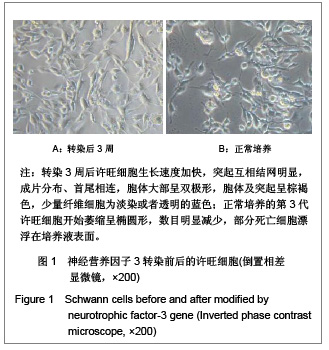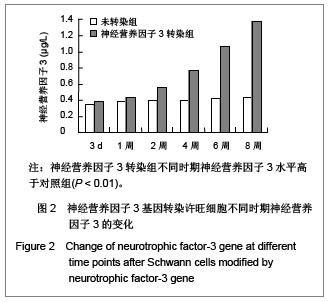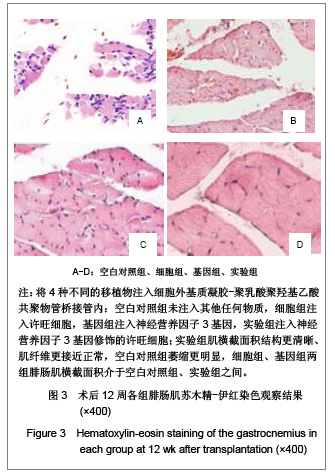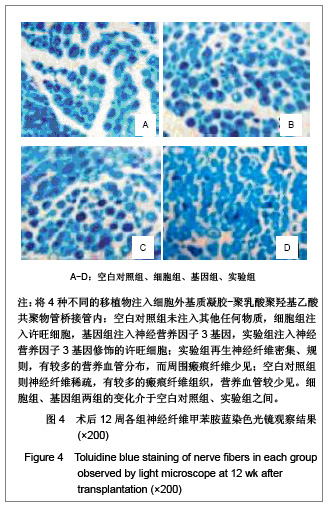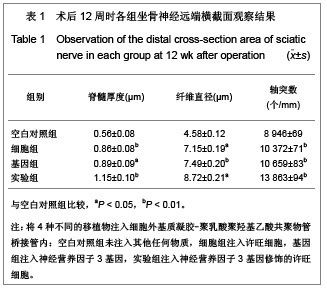中国组织工程研究 ›› 2013, Vol. 17 ›› Issue (8): 1362-1366.doi: 10.3969/j.issn.2095-4344.2013.08.006
• 纳米生物材料 nanobiomaterials • 上一篇 下一篇
神经营养因子3纳米微球载体基因工程转染许旺细胞
宗海斌1,贾金领2,董玉珍2,周慧聪2
- 1新乡医学院基础医学院机能实验室,河南省新乡市 453003
2 新乡医学院第一附属医院骨外科,河南省卫辉市 453100
Transfection of Schwann cells with neurotrophic factor-3 nanoparticles
Zong Hai-bin1, Jia Jin-ling2, Dong Yu-zhen2, Zhou Hui-cong2
- 1 Skill Laboratory of Basic Medical Science of Xinxiang Medical College, Xinxiang 453003, Henan Province, China
2 Department of Orthopedics, the First Affiliated Hospital of Xinxiang Medical College, Weihui 453100, Henan Province, China
摘要:
背景:纳米微球基因转染技术携带或增强种植细胞可持续稳定延长其释放,保持其活性和作用时间。 目的:观察纳米微球载体转染神经营养因子3基因修饰的许旺细胞对坐骨神经缺损的促进和修复作用。 方法:采用纳米微球载体将神经营养因子3基因转染入体外培养的新生Wistar大鼠许旺细胞。取Wistar成年大鼠80只制作坐骨神经缺损模型,将4种不同的移植物注入细胞外基质凝胶-聚乳酸聚羟基乙酸共聚物管桥接管内:空白对照组未注入其他任何物质,细胞组注入许旺细胞,基因组注入神经营养因子3基因,实验组注入神经营养因子3基因修饰的许旺细胞。 结果与结论:术后坐骨神经及肌纤维横截面积染色比较,实验组优于细胞组、基因组(P < 0.01),细胞组、基因组均优于空白对照组(P < 0.01),细胞组、基因组组间比较差异无显著性意义(P > 0.05)。表明神经营养因子3基因转染许旺细胞移植,可相互促进,再造神经再生的微环境,促进并修复缺损坐骨神经缺损。
中图分类号:
